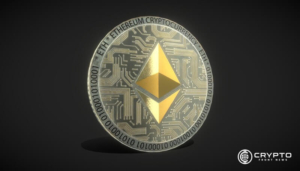- Ethereum gas fees drop to $0.01 as stable base and low priority levels drive 30-second confirmations across all tiers.
- RISC-V proposal by Vitalik Buterin aims to replace the EVM to simplify execution, cut costs, and support long-term scalability.
- With low fees and new architecture, Ethereum shifts focus from Layer 2 hype to foundational Layer 1 innovation for future growth.
Ethereum gas fees have dropped dramatically, reaching just $0.01 per transaction. The network now processes transactions for a fraction of the previous costs while maintaining 30-second confirmation times. This rapid improvement in affordability and efficiency could drive renewed user activity and mainstream adoption. This development arrives as Ethereum’s developers propose a shift in architecture. Vitalik Buterin has proposed replacing the Ethereum Virtual Machine (EVM) with the RISC-V architecture. This plan targets Ethereum’s long-term scalability and execution efficiency.
Ethereum Fees Drop Across All Tiers
Current Ethereum gas data shows a consistent base fee of 0.351 gwei. The low-tier fee sits at 0.351 gwei with no priority fee. It costs $0.01 and confirms in 30 seconds. The average tier shows a 0.361 gwei fee, adding a 0.01 gwei priority charge. It also costs $0.01 with the same confirmation time. The high-tier level records 0.398 gwei, with a 0.047 gwei priority fee, raising the cost to $0.02.
Moreover, all tiers report identical 30-second confirmation times. This uniformity indicates minimal network congestion. It also reflects limited competition for transaction inclusion. Hence, Ethereum currently offers one of the most user-friendly Layer 1 environments in terms of fees and speed.
RISC-V Proposal Targets Core Innovation
Besides the gas fee drop, Ethereum is preparing for a major technical overhaul. Buterin’s RISC-V proposal aims to replace the current EVM with a RISC-V-based execution layer. The move would simplify the architecture and cut gas costs even further. It would also remove complex precompiles, streamlining smart contract execution.
Consequently, developers would gain more flexibility. Although Solidity and Vyper will remain dominant, Rust could become viable for contract development. Cross-contract calls, accounts, and storage will remain unchanged. Additionally, all existing EVM contracts will stay compatible, ensuring a seamless transition. This proposal contrasts with the current focus on Layer 2 scaling solutions. Tanaka, an Ethereum user, emphasizes this shift. He believes Ethereum must focus on improving Layer 1 directly rather than chasing L2 narratives.






